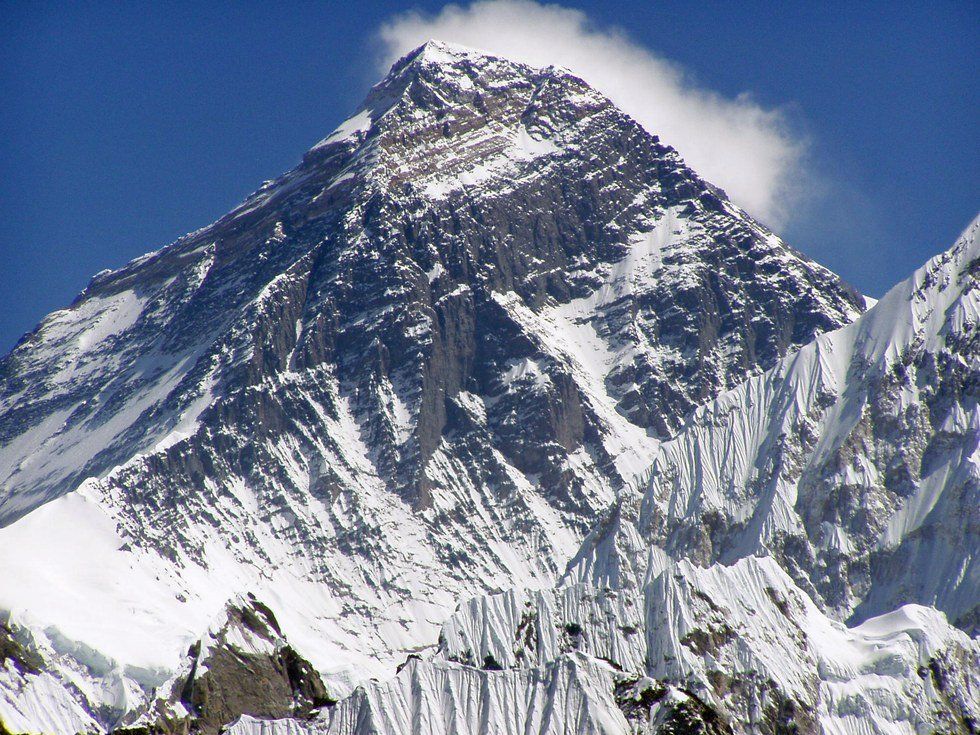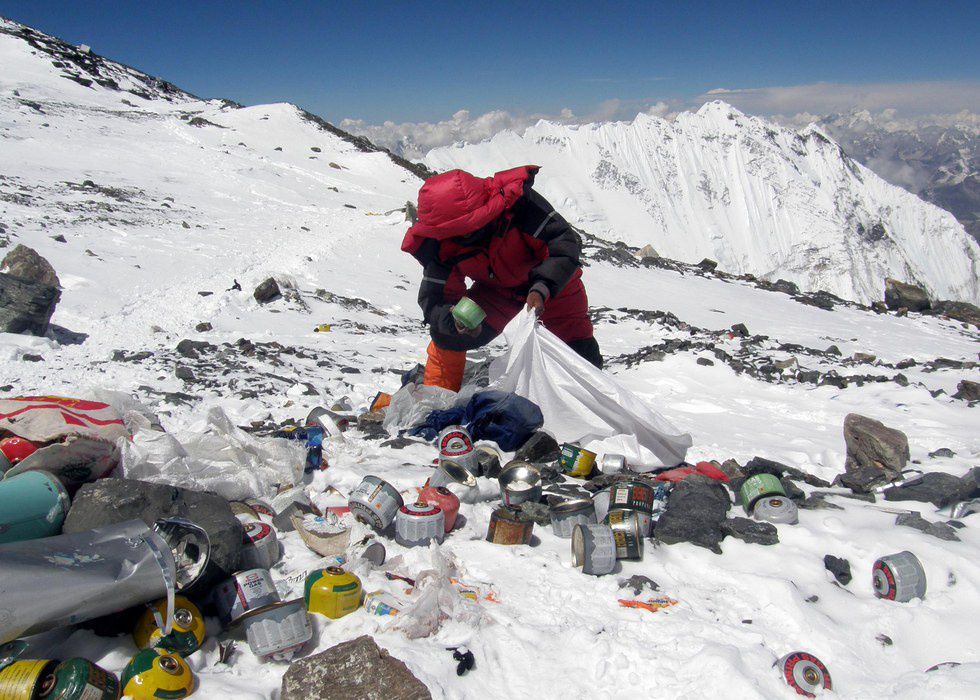Mt. Everest has captured the imagination of artists, adventurers and writers alike. In his book, Into Thin Air, John Krakauer describes a brief history of the mountain. In 1852, an Indian surveyor named Radhanath Sikhdar became the first person to accurately measure the elevation of Mt. Everest. According to Sikhdar’s measurements, the mountain stood 29,002 feet above sea level, making it the world’s highest point. Current elevation measurements using satellite imaging have placed Everest’s height at 29, 028 feet above sea level, just twenty-six feet above Sikhdar’s calculations. The Deva-dhung (seat of God) as it was known by the indigenous people of Nepal, or the Jomolungma (goddess, mother of the world) named by the people of Tibet was named Mt. Everest by Westerners, in 1865, after Sir George Everest, a famous surveyor at the time (Krakauer 16).
Prior to Everest being dubbed the tallest mountain in the world, it attracted relatively little attention. However, as time went on ambitious mountaineers and adventurers begin to ponder the thought of summiting Everest.Many expeditions attempted the dangerous climb but it was not until May of 1953, over one-hundred years after its elevation was discovered, that the world’s tallest mountain was successfully summited. The two men responsible for this remarkable feet were Edmund Hillary and Tenzing Norgay (Krakauer 20).
After Norgay and Hillary’s successful climb, Everest and the villages near its base began to see an onslaught of climbers and mountaineers, hoping to climb and see the “seat of God.” With the influx of visitors to the region, trash and other forms of deprecation to the environment began to take a toll on the mountain and the surrounding area. The government in Nepal, recognizing what the increase in traffic was doing to the environment, increased the fees for climbing Everest to $50,000 for every expeditions plus an additional $10,000 per person in 1993. They also limited the number of expeditions up the mountain to four per season.However, the Tibetan side of the mountain only charged climbers $15,000 to attempt the peak and had no limit on the number of expeditions that could be tried in a season. Within three years Nepal was forced to lift the four-expedition law in order to compete with the Tibet (Krakauer 25).
Today, villages near Everest, such as Khumbu, have begun rapidly building lodges and other tourist attractions to accommodate climbers and visitors. This increase in construction has caused the decimation of forests near the village, as trees were cut down to be used for building materials (Krakauer 47). Other communities like Lobuje, which is near Everest base camp have seen large numbers of climbers and thus their sanitation methods cannot keep-up. Visitors have reported overflowing waste facilities and human feces covering the ground in Lobuje (Krakauer 53-54).
The once sacred place has since been polluted by tourists and climbers, and the ecosystems are suffering. This phenomenon has been studied extensively. In a scientific article Contemporary Human Impacts on Alpine Ecosystems in the Sagarmatha (Mt. Everest) National Park, Khumbu, Nepal written by Alton Byers, along with deforestation, alpine ecosystems have been gravely impacted by the increase in tourism near Everest. Overgrazing of livestock, overharvesting of alpine shrubs for fuel and erosion are evident in these fragile zones.
Popular news platforms are also noticing the problems occurring on top of the world. In an article produced by the New York Times, Climbing Everest? Nepal Says Bring Back Garbage by Harris Gardiner, Mt. Everest, once called the ‘seat of god’ and the ‘mother of the world’ is now being called the world’s highest garbage dump by climbers. Over the sixty years, approximately fifty-tons of trash have been left on the slopes of Everest. Among the garbage is broken equipment, empty oxygen bottles, discarded food containers and even human corpses (The New York Times). Along with the trash other defilement of the world’s tallest mountain is evident. Because Mt. Everest adequate sanitation methods, human excrement has begun to pile up. Every season, as much as 26, 500 pounds of human waste are added to the mountain. The huge increase threatens climbers, Sherpas and villagers with disease according to the Washington post article, Decades of human waste have made Mount Everest a ‘fecal time bomb’ by Peter Holley.
Although the Nepal government has recently put in place a regulation that requires climbers to put down a $4,000 deposit, which will only be returned if they carry enough trash down from their assent (The New York Times), trash and fecal matter continue to build on the world’s highest peak. Mark Jenkins from National Geographic describes a troublesome seen at the high camps. “Garbage [can be seen] leaking out of glaciers and pyramids of human excrement [are] befouling the high camps.” (The Washington Post).
The ‘Goddess, mother of the world’ or the ‘world’s highest garbage dump.' It is clear that although the sheer natural beauty and power of Everest has never failed to capture the awe of people. However, if the desecration of her ground continues, this may not be the case for future generations.






















